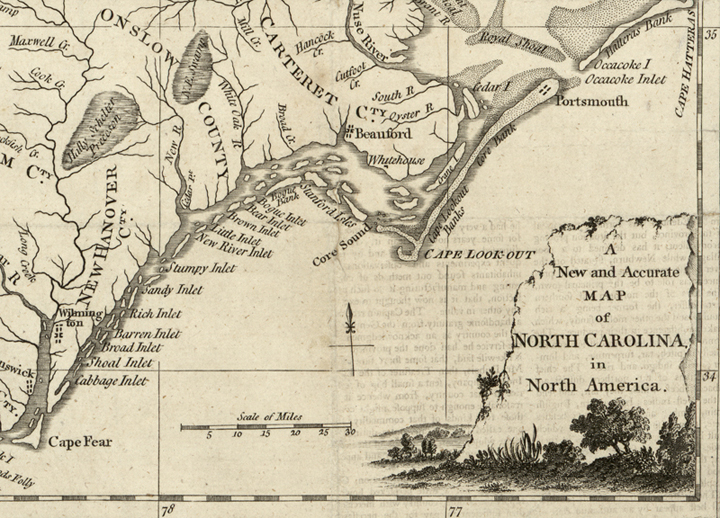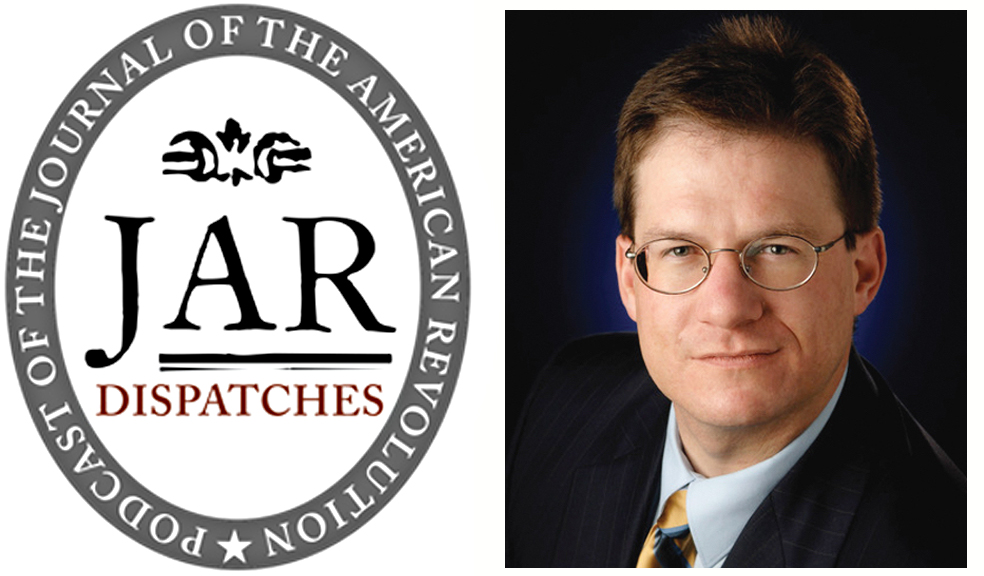John Russwurm and Samuel Cornish establish the first African American newspaper, Freedom’s Journal, in New York in 1827. The paper circulated in eleven states, the District of Columbia, Haiti, Europe, and Canada. The same year, Sarah Mapps Douglass, a Black educator and contributor to The Anglo African, an early Black paper, established a school for Black children in Philadelphia. The following year, 1828, another newspaper, Daily National Intelligencer, carried the obituary of Revolutionary War veteran Thomas Carney.
Thomas Carney was born in 1754 on Maryland’s eastern shore, and was likely free at birth, He enlisted in the 5th Maryland Regiment in May 1778, and was transferred to the 7th Maryland a month later. Contrary to the information given in his 1828 death notice, Carney’s first service was with the Maryland militia (Sarer’s Company, Washington County) in autumn 1777; he and his comrades joined the army in time to take part in the October 4, 1777 Battle of Germantown. According to historian William Calderhead, Carney’s militia company likely spent at least part of the winter of 1778 with the Maryland troops at Wilmington, Delaware, not at Valley Forge. He was probably in Wilmington when he enlisted in the 5th Maryland.[1]
An examination of military records reveals several interesting details. One document notes that Mr. Carney deserted in May 1780, while other records state he was present when discharged in November 1780. Whatever the case, after his 1780 discharge Carney must have immediately reenlisted, as a third document shows he served from August 1, 1780 to November 15, 1783.[2]
Considering that Carney was African American, another detail is particularly remarkable: he enlisted as a private soldier in May 1778, but after his transfer to the 7th Regiment, he was promoted to corporal. The promotion may have been due to his previous militia service, or that Carney was “considerably above the common size”; in any case, during the war only four Black Continental soldiers served in the rank of corporal, and none are known to have been sergeants.[3]
Little is known of the number of Black soldiers in the late-war Maryland Continental regiments, but a mid-war tally gives some indication. On August 24, 1778, at Gen. George Washington’s behest, a “Return of Negroes in the Army” was compiled. The resulting roster covered fifteen brigades in Washington’s army at the White Plains encampment, and included African Americans present, sick present, and on command (i.e., detached service). Maryland had two brigades on the return; using their combined enlisted strength and number of Black Marylanders, we find the latter formed 3.43 percent of the whole. Moving ahead to 1781, two Maryland regiments fought in the Battle of Guilford Courthouse. The 2nd Regiment comprised new enlistees, while the 1st Maryland contained the veteran survivors of the old 1st through 7th Regiments, decimated at the Battle of Camden in August 1780. Historians Lawrence Babits and Joshua Howard estimated that in March 1781 the 1st Maryland regiment strength was 350 to 400 men. Reducing those estimates by 50 to allow for commissioned officers leaves 300 to 350 enlisted men. Using the 1778 Black soldier percentage, a 1781 1st Maryland strength of 350 men would include 12 Black soldiers; if the total was 300 men, the number of Black soldiers would have been 10. Admittedly, any proportional correlation between the 1778 Maryland brigades and the 1781 1st Regiment is not a fair or straightforward comparison, but the best we can do for now.[4]

Thomas Carney’s obituary read:
DEATHS . . . Near the village of Denton, in Maryland, Thomas Carney, a colored man, at the advanced age of 74. At the commencement of the Revolution, Tom enlisted as a soldier under Col. Peter Adams [lieutenant colonel, 7th Maryland Regiment], and soon after was marched to the North, and was in the memorable battle of Germantown. In this action, the Maryland troops played a conspicuous part; but the Americans were compelled to yield to a superior force. Soon after this, Washington retired to Valley Forge, and took up his Winter quarters. The suffering of the army during that severe Winter, are well known to every American. With the spirit of true patriotism, Tom bore his share of privation and suffering. When the Maryland and Delaware lines were ordered to the south, Tom marched with his brave regiment, and shared, in that quarter, with his companions in arms, the hardships, misfortunes, and glories of the war. At the battle of Guilford Court House, he bore a conspicuous part as a soldier, and has often persisted that, when the Maryland troops came to the charge, he bayoneted seven of the enemy. At Camden, Hobkirk’s Hill, and Ninety-Six, he bore his part, and was always with his brave regiment under Howard, among the first to the charge. At Ninety-Six, his Captain [Perry Benson], (the late Maj. Gen. Benson) received a dangerous wound, but, regardless of nothing but opposing the enemy, he forgot his commander, until ordered to take him to the Surgeon. Though Benson was considerably above the common size, he carried him on his shoulders some considerable distance, to the place at which the surgeon was stationed; but, like a true solder, held on to his musket, that had so often protected him in the hour of danger. At length, overcome by excessive fatigue and heat, as he laid the almost lifeless body of Benson at the feet of the surgeon, he fainted. After he came to himself, he determined to join his regiment again; but, to his great mortification, was peremptorily ordered by the commanding officer to remain, and protect his captain, which he did with care and tenderness. For this kindness and attention, Benson never forgot him, and, whenever he came to this county, invariably paid his first visit to Tom, and, while reviewing the militia, would always have him mounted on a horse, and at his side.[5]
[1]William L. Calderhead, “Thomas Carney: Unsung Soldier of the American Revolution,” Maryland Historical Magazine, vol. 84 (Winter 1989), 319-326, www.academia.edu/42201834/William_L._Calderhead_Thomas_Carney_Unsung_Soldier_of_the_American_Revolution_Maryland_Historical_Magazine_vol._84_Winter_1989_319-326.
[2]Clayton C. Hall, Henry Stockbridge, and Bernard C. Steiner, eds., Muster Rolls and Other Records of Service of Maryland Troops in the American Revolution, 1775–1783: Archives of Maryland, Maryland Historical Society, vol. 18 (Baltimore: The Lord Baltimore Press, The Friedenwald Company, 1900), 192, 197, 352, 528.
[3]Ibid., 197. Daily National Intelligencer, July 22, 1828. National Archives, Compiled Service Records of Soldiers who Served in the American Army During the Revolutionary War (National Archives Microfilm Publication M881), Record Group 93 (Maryland), Seventh Maryland Regiment, Thomas Carney, Folder 67, pages 1-2.
“In his study of the Rhode Island regiments, 1775–1783, Daniel Popek found three black soldiers who made corporal, all in the 1st Rhode Island. Those men, Pero Mowry, Prince Limas, and David Porter, remained in that rank, the highest attained by African or Native American soldiers in any Rhode Island regiment, only a short time. Porter was reduced to the ranks after being tried for robbery in February 1780. Mowry and Limas were demoted when the 1st Rhode Island was merged with the integrated Rhode Island six months Battalion in July 1780. The reason for the short-term promotions was that enlistments had expired for several white 1st Rhode Island noncommissioned officers and those vacant positions needed to be filled. With the July 1780 unit merge and company consolidation that need ended. Only a few other soldiers of color are known to have attained noncommissioned rank. The greatest number were Native Americans, most serving in a special company comprising about 75 men from a number of tribes, including Tunxis, Mohegans, Pequots, and Stockbridge Mohicans, Wappingers, and Oneidas. The ‘Indian Corps’ was formed in summer 1778 of men already serving with Massachusetts and Connecticut Continental regiments. The company’s command contingent included Sergeants Timothy Yokun and Thomas Hikumon, and Corporals Jacob Tusnuck and Aaron Sausonkhok, all Stockbridge Mohicans. A Montauk Indian, Joshua Sampson, was a corporal in Col. Henry Knox’s Artillery Regiment in 1776. As for African Americans, Sampson Coburn, noted to be a ‘colored’ soldier in a 1922 town history of Dracut, Massachusetts, was corporal in Captain Oliver Parker’s company of Colonel William Prescott’s 1775 Massachusetts regiment. If true, Coburn would have been eligible to give orders to white soldiers. Six non-commissioned officers in Captain David Humphrey’s segregated 1782 4th Connecticut company are mistakenly listed as men of color in Eric Grundset’s work [Forgotten Patriots: African American and American Indian Patriots in the Revolutionary War (Washington, D.C.: National Society Daughters of the American Revolution, 2008)]. Thus far, only a few black corporals are known, more the exception than the norm.”
John U. Rees, ‘They Were Good Soldiers’: African–Americans Serving in the Continental Army, 1775–1783 (Helion & Company, Limited, Warwick, U.K.: 2019), 24-25.
[4]Maryland had two brigades present on the 1778 return, each with four regiments. The First Maryland Brigade comprised the 1st, 3rd, 5th, and 7th Regiments, while the Second Brigade had the 2nd, 4th, 6th Maryland Regiment, plus the German Regiment. The total strength of both brigades in August 1778 was 2,763 enlisted men (minus men sick absent); the number of African American soldiers in the combined Maryland brigades was 95, which was 3.43 percent of the whole.
In their book on Guilford Courthouse, Lawrence Babits and Joshua Howard estimated the two Maryland regiments in Maj. Gen. Nathanael Greene’s army to number, combined, 700 to 800 men. But only the 1st Maryland contained the veteran survivors of the old 1st through 7th Regiments, decimated at the Battle of Camden in August 1780. Babits’ and Howard’s strength estimate of the 1st Maryland in March 1781 was 350 to 400 men. Supposing there to have been about 50 commissioned officers in the regiment, that would leave 300 to 350 enlisted men.
‘Return of the Negroes in the Army,’ 24 August 1778, Library of Congress, George Washington Papers, series 4, General Correspondence, 1697–1799, Library of Congress, Presidential Papers Microfilm (Washington, D.C.: Library of Congress, 1961), For analysis of the 1778 return see “Updated Statistics for the August 1778 ‘Return of Negroes in the Army,” continentaldevil.wordpress.com/2020/01/12/updated-statistics-for-the-august-1778-return-of-the-negroes-in-the-army-fifteen-brigades-of-gen-george-washingtons-main-army/. See also, Rees, They Were Good Soldiers, 36-39. (The states not represented on the August 1778 return were Rhode Island, New Jersey, the Carolinas, and Georgia.). Lawrence E. Babits and Joshua B. Howard, Long, Obstinate, and Bloody: The Battle of Guilford Courthouse (Chapel Hill: University of North Carolina Press, 2009), 69, 220.










One thought on “Nineteenth-Century Remembrances of Black Revolutionary Veterans: Thomas Carney, Maryland Continental Soldier”
Very informative read and great insight into the demographics of the time. For Maryland and Delaware Continentals, General Greene’s Southern Campaign after Guilford was a brutal time. I’ll raise a gill of rum to the memory of Thomas Carney. You can find a copy of Benson’s letter here http://revwarapps.org/s35203.pdf